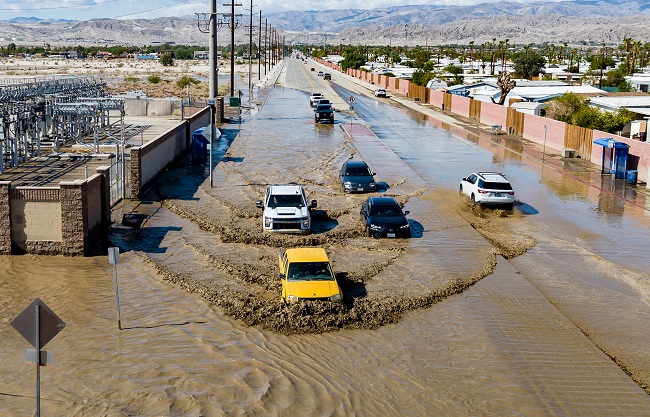Heavy rainfall triggered widespread flooding and severely disrupted air travel in Mexico City on Sunday, prompting the temporary shutdown of Benito Juárez International Airport, the capital’s primary aviation hub. Authorities halted all takeoffs and landings for three hours starting just before 9:00 p.m. local time (0300 GMT), citing hazardous conditions caused by torrential rain and drastically reduced visibility. The airport’s management announced the suspension on social media, stating that crews needed to clear accumulated floodwater to restore operations at the facility, which handled 45.4 million passengers in 2024 alone—ranking it among Latin America’s busiest.
The storm inundated major roadways across the sprawling metropolis, with water levels in some areas reaching 50 centimeters (19 inches). Mexico City’s government responded by declaring a purple alert, its highest emergency level, for the central zone of the nine-million-resident capital. The measure underscored the severity of the deluge, which disrupted both transportation and daily life.
The airport closure highlights recurring vulnerabilities in a region increasingly strained by extreme weather. Mexico faces intense storms annually between May and November, a pattern scientists link to climate variability and warming ocean temperatures. Recent years have seen catastrophic impacts: Hurricane Otis, a Category 5 storm, killed dozens and ravaged the coastal city of Acapulco in October 2023. Just two months earlier, Hurricane John, a Category 3 system, claimed 15 lives, while June’s Hurricane Erick left two dead in southern regions.
While Sunday’s rainfall did not immediately result in reported casualties, its rapid escalation forced emergency protocols into action. Teams worked to pump water from critical infrastructure, and authorities urged residents to avoid nonessential travel. The airport resumed operations after the three-hour pause, though flight delays persisted as crews addressed backlogged schedules.
The incident underscores broader challenges for Mexico’s disaster preparedness, particularly in densely populated urban areas where drainage systems often struggle to cope with intense precipitation. Experts emphasize that aging infrastructure and unregulated urban expansion exacerbate flood risks, leaving cities like the capital acutely exposed during seasonal storms.
As climate patterns grow more volatile, the economic and human toll of such events remains a pressing concern for policymakers. For now, residents and travelers brace for further disruptions, with meteorologists predicting additional rain in the coming weeks during Mexico’s storm-prone summer season.
